#伊勢神社
Explore tagged Tumblr posts
Text

種子島伊勢神社から見た馬毛島 2025.1.1
自衛隊基地建設中の馬毛島。米軍空母艦載機の離発着の訓練場ともなる。周辺海域の建設土砂による汚染や訓練時の戦闘機騒音問題が危惧されている。
#Mageshima#Kagoshima#Tanegashima#landscape#japan#Self-Defense Force Base#FCLP#photography#鹿児島県#種子島#馬毛島#西之表市#伊勢神社
8 notes
·
View notes
Text
Meoto Iwa - the married rocks of Futami
We noted the presence of "married camphor trees" at Meiji-jingû last time, so I guess we can talk about other sacred things linked by rope.

One of the most famous of these is the couple of "married rocks" on the coast of Mie, on the premises of Okitama-jinja at Futami, near Ise. The Meoto Iwa represent the founding couple of Japan according to Shinto, Izanagi and Izanami.

The shimenawa ropes are more heavy-duty than what we saw on the camphor trees: 5 strands, 40 kg each. Still, as they are exposed to the seawater spray from crashing waves, they need to be changed several times a year, which involves quite a few people as you'd expect, as shown on the poster below. Ceremonies occur in May, September and December.

The ropes certainly look heavy on the smaller rock in particular, they look like they could slip off, but instead they cling on rather gracefully.

Dotted around the shrine are statues of the messengers of the gods: frogs.

While Futami's Meoto Iwa is the most important example of "paired rocks" in Japan, owing to how far the tradition dates back and its proximity to Ise Grand Shrine, there are quite a few others across the country. Below is another Meoto Iwa in Mihonoseki, Shimane.

#Japan#Mie-ken#Ise#Futami#Okitama-jinja#Shimane-ken#Mihonoseki#Meoto Iwa#married rocks#shimenawa#三重県#伊勢#二見#興玉神社#島根県#美保関#夫婦岩#2018-04
157 notes
·
View notes
Text

Sean bienvenidos a una nueva publicación en la cual aclararemos las diferencias entre un templo y un santuario japonés dicho esto pónganse cómodos que empezamos. - Seguramente, todos hemos visto alguna vez en fotos templos y santuarios que están por todo el archipiélago nipón y más de una vez nos hemos preguntado: ¿Cuáles son las diferencias entre ellos? - Primero la palabra santuario ¿Qué significa?: Es el lugar en el que los japoneses adoran a todos los kamis por lo cual cada uno tiene el suyo propio, también cabe destacar que puede ser una montaña un lago ect.. Cuando buscamos esta palabra en español, hace referencia a un templo,entonces ¿Cuáles son las principales diferencias? la principal sería que los santuarios sintoístas, disponen de una puerta principal llamada torii a diferencia de los templos budistas, que disponen de una pagoda. Ejemplos de templos budistas por ciudades Templo de Kiyomizu-dera (Kioto) Templo Kinkakuji (Kioto) Templo Senso-ji (Tokio) Templo de Hokokuji (Kamakura) Templo Todai-ji (Nara) Templo de Sanjusangendo (Kioto - Santuarios japoneses por ciudades: Santuario de Ise – Ciudad de Ise Santuario Meiji – Tokio Santuario Itsukushima – Miyajima Santuario Sumiyoshi Taisha – Osaka Santuario Hie Jinja – Tokio Santuario Izumo – Ciudad de Izumo - Para aclarar las dudas, entre un santuario y un templo: También hay que tener en cuenta los distintos nombres y otras de las cosas que caracterizan un templo son las siguientes : Komainu, Temizuya o chōzuya, Salas principales, Amuletos,Komainu, Temizuya el honden y el haiden. En próximos capítulos podemos hablar de cada uno de ellos, aparte de seguir realizando publicaciones de historia, arqueología, geografía entre otros temas de japón os deseo un cordial saludo. - Welcome to a new publication in which we will clarify the differences between a temple and a Japanese sanctuary. That being said, make yourself comfortable and let's get started. - Surely, we have all seen temples and sanctuaries that are all over the Japanese archipelago in photos and more than once we have asked ourselves: What are the differences between them? - First, the word sanctuary What does it mean?: It is the place where the Japanese worship all the kamis, so each one has their own, it is also worth noting that it can be a mountain, a lake, etc. When we look for this word in Spanish, it refers to a temple, so what are the main differences? The main one would be that Shinto shrines have a main door called torii. unlike Buddhist temples, which have a pagoda. Examples of Buddhist temples by city Kiyomizu-dera Temple (Kyoto) Kinkakuji Temple (Kyoto) Senso-ji Temple (Tokyo) Hokokuji Temple (Kamakura) Todai-ji Temple (Nara) Sanjusangendo Temple (Kyoto) Shitennoji Temple (Osaka) - Japanese shrines by cities: Ise Shrine – Ise City Meiji Shrine – Miyajima Sumiyoshi Taisha Shrine – Osaka Fushimi Inari Shrine – Kyoto Hie Jinja Shrine – Tokyo Izumo Shrine – Izumo City - To clarify doubts, between a sanctuary and a temple: We must also take into account the different names and other things that characterize a temple are the following: Komainu, Temizuya or chōzuya, Main rooms, Amulets, Komainu, Temizuya the honden and the haiden. In future chapters we can talk about each of them, apart from continuing to publish publications on history, archaeology, geography, among other topics about Japan, I wish you a cordial greeting. - 寺院と日本の聖域の違いを明確にする新しい出版物へようこそ。そうは言っても、安心して始めましょう。 - 確かに、私たちは皆、日本列島各地にある寺院や聖域を写真で見たことがあり、それらの違いは何だろうかと自問したことが一度や二度ではありません。 - まず、聖域という言葉はどういう意味ですか?: それは日本人がすべての神を崇拝する場所であり、それぞれに独自の神があり、それが山や湖などであることも注目に値します。この単語はスペイン語で寺院を指しますが、主な違いは何でしょうか? 主なものは、神社には鳥居と呼ばれる表扉があることです。 塔のある仏教寺院とは異なります。 都市別の仏教寺院の例 清水寺(京都) 金閣寺(京都) 浅草寺(東京) 報国寺(鎌倉) 東大寺(奈良) 三十三間堂(京都) 四天王寺(大阪) - 都市別の日本の神社: 伊勢神宮 – 伊勢市 明治神宮 – 東京 厳島神社 – 宮島 住吉大社 – 大阪 伏見稲荷大社 – 京都 日枝神社 – 東京 出雲大社 – 出雲市 - 聖域と寺院の間の疑問を解消するには、次のような名前や寺院を特徴付けるその他のものについても考慮する必要があります: 狛犬、手水舎または手水舎���主室、お守り、狛犬、本殿と拝殿。 今後の章では、歴史、考古学、地理、その他日本に関するトピックに関する出版物の発行を続けることに加えて、それぞれのテーマについてお話します。心からご挨拶を申し上げます。
#清水寺#京都#金閣寺#伊勢神宮#伊勢市#日枝神社#東京#出雲神社#出雲市#寺院#神社#日本#歴史#ユネスコ#Kiyomizuderatemple#Kyoto#KinkakujiTemple#IseShrine#IseCity#HiJinjaShrine#Tokyo#IzumoShrine#IzumoCity#temple#Shrine#japan#history#unesco
29 notes
·
View notes
Text

The sacred Meoto Iwa (夫婦岩) or Husband & Wife Rocks off the coast of Ise, Mie Prefecture
Photo by the Asahi Shimbun
Image from "Shintō: The Sacred Art of Ancient Japan" edited by Victor Harris, published by the British Museum Press. 2001, page 16
69 notes
·
View notes
Text

#gekitetsuの写真#photography#photo#写真#gekitetsuphoto#japan#d850#photograpy#神道#神社#伊勢神宮#内宮#神宮#伊勢の神宮#天照大御神#鳥居#杉#sinto#monochrome#白黒
4 notes
·
View notes
Text
なりたい自分、変わりたい自分、叶えたい夢や願望、変えたい状況、そして本当にあなたが望む未来へと、私が持つスピリチュアルな能力と、あなたのガイドやハイヤーセルフと繋がり、メッセージを通訳しながら、あなたの望む現実・未来の創造や本当の自分の人生を生きる為のお手伝いします。
伊勢神宮のお膝元 伊勢のスピリチュアルヒーラー 松本 じゅんこです☺︎

お天気によって様々な表情で迎えて下さる玉置神社📷✨
わたしたちは
この3次元、現実世界で生きています
自分の感性や感覚を
自分の感情、本当の気持ちを心から大切にして
直感を受け取り行動すること
他の誰かと比べたり
他の誰かの軸や価値観で生きていることに気づくこと
他の誰かの軸や価値観で生きることをやめることは
自分の人生を創造するために、生きるために
とても大切なことだと思います
どんな状況でも
自分の人生を創造すること、自由に生きることは
自分の人生に責任を持つとゆうことで
それには自分自身との信頼関係が不可欠です
全ては自分自身の中にあって
他者との関係(人間関係)
自分の外側の世界(自分の現実)は
まず、自分との信頼関係がないと築くこと
創造することはできず、反映されません。
そして、自分が自分に放つ言葉、思考は
しっかりとダイレクトに自分が聞いている、 受け取っています。
いまの自分の感情や感覚を蔑ろにせず
自分の意識に意識的になり
自分とのコミュニケーションをとって
自分との信頼関係を
しっかりと築いていきましょう☺︎
わたし達は自分の人生を創造する時代に突入しています🌎💫
自分との調和を大切に
感性、感覚、感情を日々大切に
1人でも多くの方が
本来の自分の生き方を見つけ
イキイキとした毎日を過ごして頂けますように🙏✨
Enjoy weekend🌝❤️
Shangrilaスピリチュアルリーディングセッションでは、あなたのハイヤーセルフやガイドと繋がり、お一人お一人丁寧にあなたへのメッセージや現実に沿ったアドバイスをお伝えしていきます🌝
☆ 本当の自分の気持ちや自分自身に触れると様々なことが変化しはじめ、人生が動き出します。
本当のあなたと
あなたを繋いでいきます😊✨
お問い合わせ・ご予約✉︎
℡090-2617-8527(21時まで)
ヒーラー
松本 じゅんこ
#伊勢神宮#スピリチュアルリーディング#スピリチュアルカウンセリング#スピリチュアルヒーリング#三重県#宇宙#伊勢市#自分を大切にする#エネルギーヒーリング#スピリチュアル#心#自分らしく生きる#玉置神社
2 notes
·
View notes
Text
受到足利氏歷代的尊崇,是為足利的伊勢大人,更因入選最佳開運神社第2位而頗具盛名,有著可愛月兔與狐狸形象的可愛神社的「足利伊勢神社」!
#巡日#旅行#出國#神社#安產守護之石#狐狸#月兔#足利伊勢神社#可愛日本#足利#栃木#栃木自由行#巡日旅行攝#Japan#Travel#Shrine#Isejinja#IseShrine#とちぎ#にほんこく#RoundtripJp
1 note
·
View note
Text
伊勢原
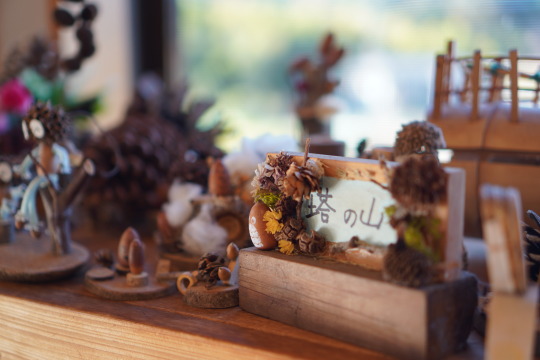
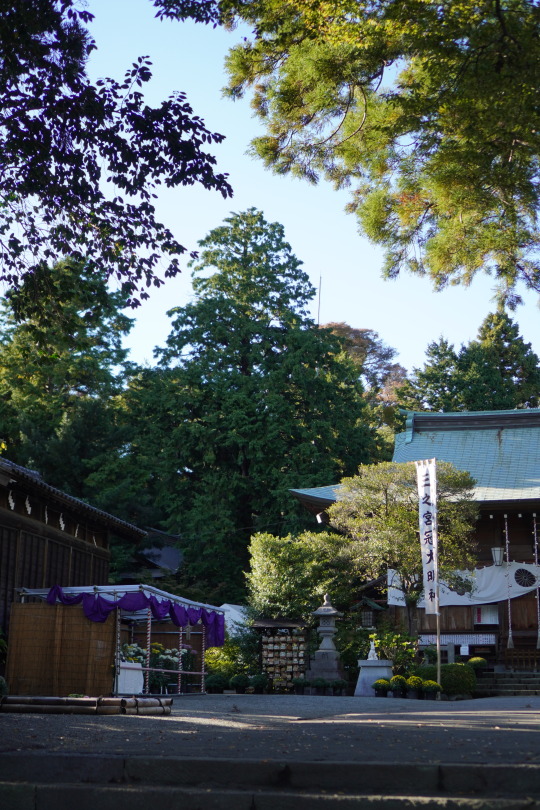
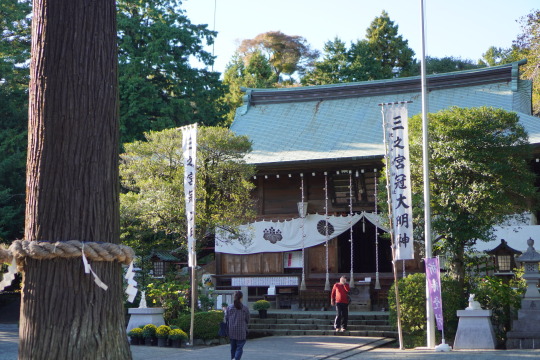
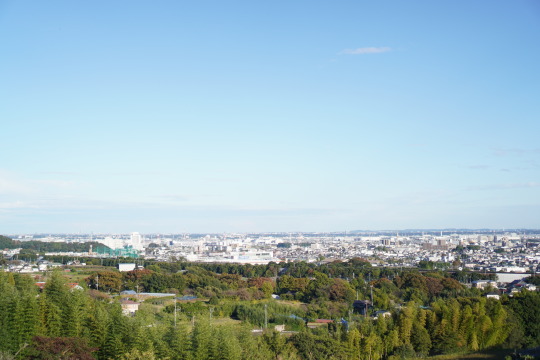
いせはら塔の山緑地公園はナラ枯れ対応のため森の中にまでは入れず、途中まで散策。その後三ノ宮比々多神社まで。手入れの行き届いた神社。神社は昔から好きな場所で、ここも心落ち着く素敵な場所だった。奥の小高い丘の上にある、元の宮からの景色はなかなかのもの。戦国の世にあっては重要拠点のひとつだったよう。
0 notes
Text
昭和の大修理の際の西岡常一棟梁の言葉をまとめた、「法隆寺を支えた木」をぜひ読んでみてください。 1400年経ったヒノキにかんなをかけると、新品のヒノキと同じ香りがするそうです。 瓦屋根の下地には、杉の樹皮が使用されていますが、これも1000年以上前のものだそうです。 1200年前のヒノキですが、新品のヒノキと同等の強度があるという実験が紹介されていました。 ヒノキは、切り出した後から、結晶化が進行し、強度を増していくそうです。 もっとも強度が上がるのは、切断した約200年後。 すべての結晶化が終わってから、強度の劣化が始まると想定されていますが、 1200年経った、現在、切り出したときと同じ強度にまで強度が低下したのではないか、ということでした。 五重塔は、芯柱が子供がしゃがめるぐらい?浮いているらしく、 西岡常一さんは、「たぶん建築中に腐ってきたから、切断したんじゃないでしょうか?」とおっしゃっていました。 キッチンも御風呂場もなく、冷暖房による結露も発生せず、通気性抜群で、雑草はもちろん、日差しを遮る樹木もないような状況であれば、木材は腐るはずがありません。 法隆寺だけではなく、薬師寺の如来、菩薩、東大寺の仁王像、興福寺の阿修羅像、古くからある仏像などは、細い指先までも、一切腐りません。 それより不思議なのは、弥生時代の遺跡から、地下水につかった状態の杉で作られた舟が残っていたり、古墳時代からきれいな壁画が残っていた高松塚古墳を現代人が発掘し、以前と同じ環境を人工的に作り出したら、大量のカビが発生して、壁画が消えかけてしまったりすることのほうが不思議です。 法隆寺では鉄をたたいて作った釘が現在でも活躍しています。 いったん、外したのですが、同じような釘を作ろうとすると、とてつもない手間がかかるようで、同じものを使用することにしたそうです。 なんでも、鉄を何層にも重ねてたたき、さらに重ねてたたくことによって、木の年輪のように作り、奥までさびが進行しないようになっているそうです。 法隆寺に至るまでにたくさんの寺社仏閣が建てられましたが、いずれも数十年で腐ってしまいました。 山田寺など。 ���在でも、木曾のヒノキを使用して、伊勢神宮が作られますが、20年ごとに建て替えています。 原因は、ヒノキの柱を地面に埋める工法を採用しているからです。 法隆寺を含めた古いお寺は、仏様を守りたいという先人たちの知恵の結晶なのでしょう。 最近では、現代人が文明を持ち込むため、たくさんの木造建築が破壊されています。 法隆寺の昭和の大修理では、金堂壁画の絵を模写して、保存しようとしていた人が、寒いからと暖房器具を持ち込んだために火事が発生し、法隆寺の金堂は全焼してしまいました。 金閣寺は、放火によって、全焼してしまいました。 東大寺の南大門は、クレーン車が、通行する際に、クレーンが上がったままになっていることに気づかず、南大門の主要建築材に多大なる破損を与えてしましました。
64 notes
·
View notes
Photo

泣き相撲 - 比々多神社, 三ノ宮, 伊勢原, 神奈川 Crying Baby Festival - Hibita Shrine, Sannomiya, Isehara, Kanagawa
76 notes
·
View notes
Text
江ノ島 寒中神輿錬成大会2017 和彫り



江ノ島 寒中神輿錬成大会 2017
藤沢鎌倉神輿連合会主催。参加:藤沢伊勢睦、片瀬諏訪睦、小動會(以上担ぎ方どっこい)、鳳龍(担ぎ方江戸前)。始めに安全祈願のお払いがあるが、大会は神社主催ではない。イベント扱いで刺青も自由。
神輿渡御は信者が行うので純粋な神事ではないが、神様を乗せる御霊(みたま)うつしが必要なので、神社の意向に左右される。現��多くの神社が刺青を排除しているが、はっきりしていない場合もある。
52 notes
·
View notes
Text













2025.03.23(日) 早朝、地区の公園で桜の木にぼんぼり設置作業。その後急遽家族と天橋立へ行くことになっていたので、9時過ぎに出発。 元伊勢の籠(この)神社と奥宮の眞名井神社にお詣りし、天橋立内の「はしだて茶屋」さんで名物「あさり丼」のお食事と天橋立散策。 久々の遠出。よき一日でした。
33 notes
·
View notes
Text
Sean bienvenidos japonítasarqueológicos a una nueva entrega, en esta ocasión vengo a aclarar dudas sobre la diosa Amaterasu dicho esto comencemos. - Amaterasu aparece en los libros kojiki y Nihonshoki que son los más antiguos de Japón, dicha diosa simboliza el sol, la luz, la compasión y la verdad. Además Representa la casa real con la flor de crisantemo, también ha recibido otros nombres como: "Hirume" y "Mukatsuhime. Sus padres eran izanagi(dios creador de Japón) e izanami(diosa del infierno), izanagi al quedar contaminado de la tierra de Yomi fue a purificarse y al quitarse la ropa fueron naciendo los demás dioses y ella nació de su ojo izquierdo. Amaterasu gobernaba el Takamanohara y su hermano Susanoo era el dios del mar. - Amaterasu, estaba asustada por su hermano menor y decidió esconderse en una cueva profunda en Takamagahara llamada "Ama no Iwato" y bloqueó la entrada. Este es el famoso “Amaniwato no Kamigakure”, que el pueblo japonés sigue recreado como una de sus muchas tradiciones populares. - Como ya hablamos en otras publicaciones el sintohismo, es una religión autóctona de Japón que durante la era Meiji sería utilizada para clasificar lo japonés y de lo que no era japonés, los japoneses nunca dejaron el sintohismo de lado. La simbología de la bandera japonesa se remonta desde tiempos muy remotos. - La diosa Amaterasu tiene unos 5000 templos dedicados a ella y se llaman Shinmei Jinja. El templo se localiza dentro del santuario Ise Jingu, también conocido como (oise-san) y el templo se llama Kotai jingu. En la ciudad de Iwato en la prefectura Miyazaki se encuentra el santuario Amanoiwato donde se dice que Amaterasu fue establecida como deidad principal. Amaterasu lo podemos traducir como: Diosa del sol o como diosa solar. - 新作へようこそ、今回は天照大神の疑問を解き明かすということで、始めましょう。 - 日本最古の古事記や日本書紀に登場する天照大神は、太陽、光、慈悲、真実を象徴しています。また、菊の花で王家を表し、「ヒルメ」や「ムカツヒメ」などの別名も持っています。彼の両親はイザナギ(日本の創造神)とイザナミ(地獄の女神)でした。ヨミから大地を離れ、身を清めに行き、服を脱ぐと他の神々が生まれ、左目から生まれました。 アマテラスは高天原を治め、弟のスサノオは海の神でした。 - 弟を恐れたアマテラスは、高天原の深い洞窟「天の岩戸」に身を隠し、入口をふさいだ。これが有名な「天岩戸の神隠れ」で、日本人は多くの人気のある伝統の1つとして再現し続けています. - 他の出版物ですでに説明したように、神道は日本固有の宗教であり、明治時代に日本人とそうでないものを分類するために使用されましたが、日本人は決して神道を放棄しませんでした.日本の国旗のシンボルは、非常に遠い時代にまでさかのぼります。 - 天照大神を祀るお寺は約5,000あり、神明神社と呼ばれています。このお寺は伊勢神宮内にあり、通称「お伊勢さん」とも呼ばれ、皇体神宮と呼ばれています。宮崎県岩戸市には天照大神を主祭神とする天岩戸神社がある。アマテラスは、太陽の女神または太陽の女神として翻訳できます。 - Welcome to a new installment, this time I come to clarify doubts about the goddess Amaterasu, having said that, let's begin. - Amaterasu appears in the Kojiki and Nihonshoki books, which are the oldest in Japan, this goddess symbolizes the sun, light, compassion and truth. It also represents the royal house with the chrysanthemum flower, it has also received other names such as: "Hirume" and "Mukatsuhime. His parents were izanagi (creator god of Japan) and izanami (goddess of hell), izanagi when contaminated by the earth from Yomi she went to purify herself and when she took off her clothes the other gods were born and she was born from her left eye. Amaterasu ruled the Takamanohara and her brother Susanoo was the god of the sea. - Amaterasu, scared of her younger brother, hid in a deep cave in Takamagahara called "Ama no Iwato" and blocked the entrance. This is the famous "Amaniwato no Kamigakure", which the Japanese people continue to recreate as one of their many popular traditions. - As we have already discussed in other publications, Shintoism is an indigenous religion of Japan that during the Meiji era would be used to classify what is Japanese and what was not Japanese, the Japanese never abandoned Shintoism aside. The symbology of the Japanese flag dates back to very remote times. - The goddess Amaterasu has about 5,000 temples dedicated to her and they are called Shinmei Jinja. The temple is located inside the Ise Jingu shrine, also known as (oise-san) and the temple is called Kotai jingu. In the city of Iwato in Miyazaki Prefecture is the Amanoiwato Shrine where Amaterasu is said to have been established as the chief deity. Amaterasu we can translate it as: Goddess of the sun or as solar goddess.
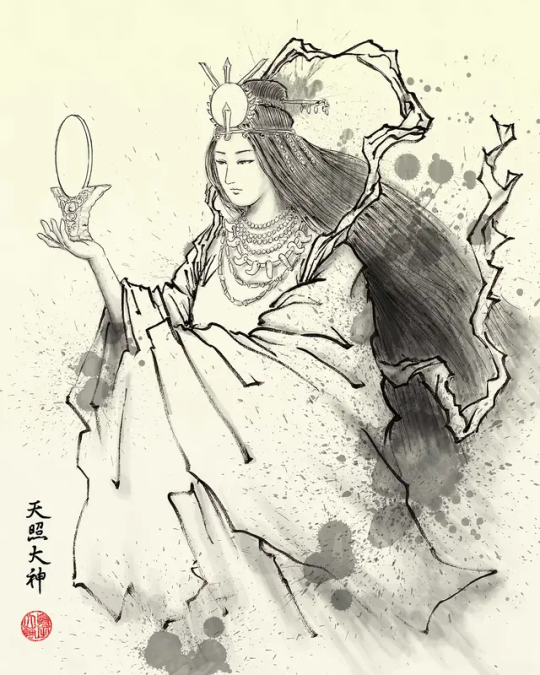
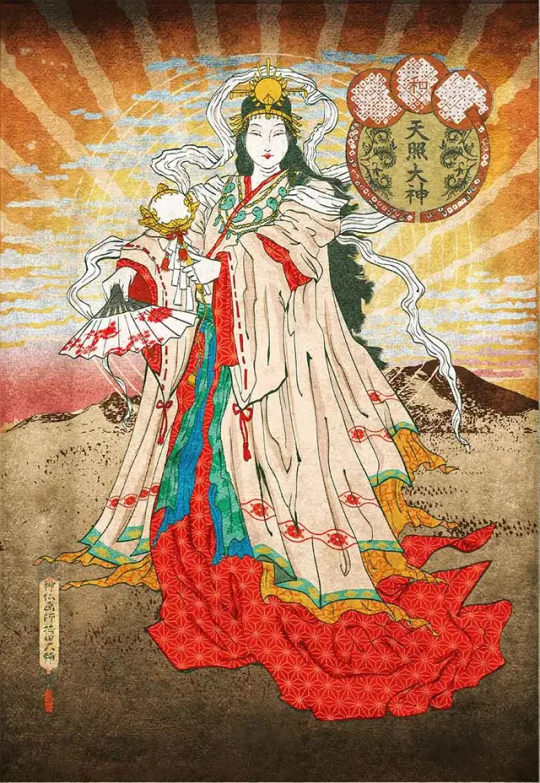
#日本#アマテラス#アート#写真#ユネスコ#文化#神話#神道#シントイズム#japan#amaterasu#art#photo#unesco#culture#mythology#synthology#sintoism
62 notes
·
View notes
Quote
日本の百貨店には2つの系統がある。一つは呉服屋を祖業とする「呉服系」。三越、伊勢丹、高島屋、大丸、松坂屋、そごう、松屋などである。もう一つが鉄道会社が沿線価値を高めるためターミナルに作った「電鉄系」。こちらは阪急、東急、近鉄、西武、小田急、京王、東武、阪神、名鉄などである。
名鉄百貨店も閉店へ 電鉄系「大衆百貨店」の黄昏(WWDJAPAN.com) - Yahoo!ニュース
29 notes
·
View notes
Text
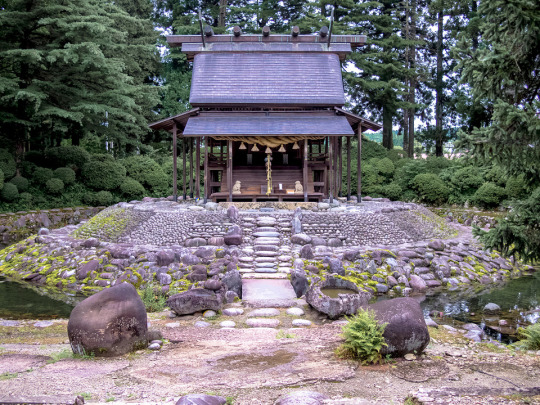
画像は唐松神社「天日宮」
かなり昔の前回の投稿(limk)の謎の直線ラインは鹿島神宮へと続くのだけど、鹿島神宮から伸びるラインといえば伊勢神宮へと伸びるラインの方が有名です。
この伊勢神宮ラインと大物忌神社ラインを鹿島神宮を中心に90度移動したり対照的に重ねたりするとちょっと不思議な事に気づきます、いろんな伝説や地名に似たようなものが重なりあうような感じになるんです、ひとつひとつ紹介するのはめんどうなのでちょっとした事でこれ↓
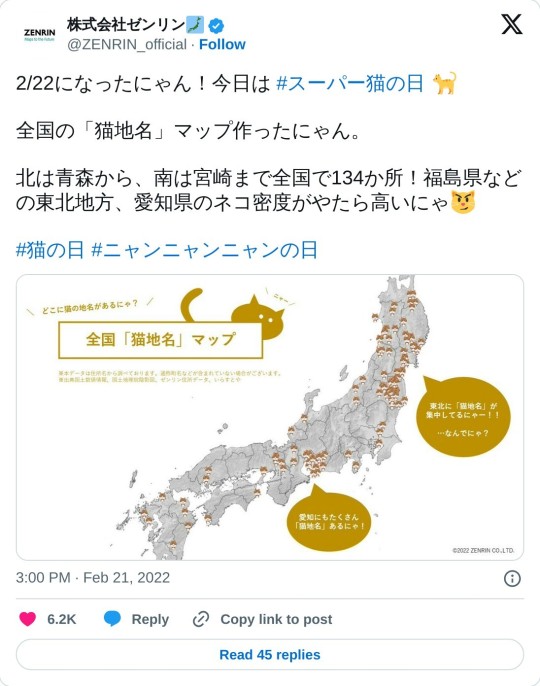
こんな感じでなんとなく重なるのです。90度で言えばこんなのもあるよ↓

前にニギハヤヒが東北に降臨したとされるうさんくさい話を元に唐松神社に行ってみたけど、実はニギハヤヒと言えばでお馴染みの磐船神社の位置もこの理論で重なったりするのだ、ばばーん。

何てこと考えてた��こんな動画もアップされていたりして大層な事になってきそうだなー(他人事)
youtube
この事もあって鹿島神宮や磐船神社にでも行こうかと思ってたけどコロナや金銭的な理由から断念、ぴえん。でも誰かがこんな風にどんどんピタリとハマる説を上げてくれてるので出かけなくてもいいのかもね、インターネット便利。
45 notes
·
View notes
